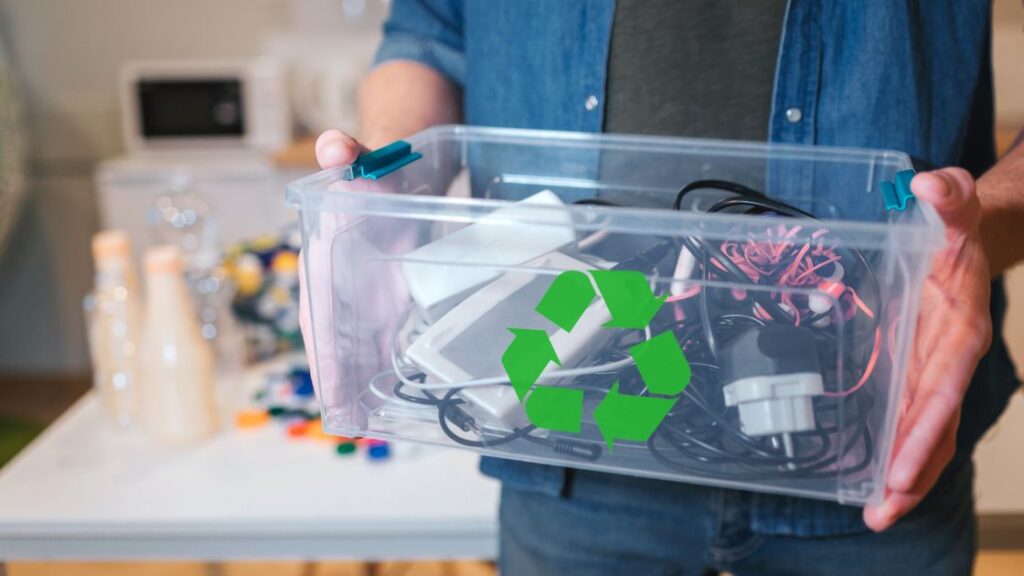Advertisements
I’ve always loved technology. From the latest smartphones to smart homes, I eagerly followed every upgrade and innovation. But one day, while reading about e-waste in Ghana’s landfills, something clicked. I realized I had never stopped to ask: What happens to my old devices when I upgrade?
That single question opened a rabbit hole I didn’t see coming. And the deeper I dug, the more I learned about technology’s hidden environmental cost. Today, I want to share what I found, how it changed the way I use tech, and how you can make a difference without giving up your gadgets.
The Hidden Environmental Cost We Often Ignore

At first glance, it’s easy to assume that digital tech is clean. After all, it’s not like a coal plant or diesel truck. But the truth is, the tech industry leaves a massive environmental footprint—one we rarely talk about.
Manufacturing Damage
Every smartphone, laptop, or smart TV requires mining of rare earth elements like lithium, cobalt, and tantalum. These are often extracted under harsh, unregulated conditions that destroy ecosystems and harm local communities.
And that’s just the beginning. Manufacturing devices consumes tons of energy and water, often relying on fossil fuels in countries where electricity is far from green.
The E-Waste Crisis
I’ll admit it—I used to toss my old phones into drawers and forget about them. I figured, “I’ll recycle them eventually.” But the reality is shocking: over 50 million tons of e-waste are produced globally each year. Less than 20% is properly recycled.
Much of it ends up in developing countries, where workers—often children—manually dismantle devices, exposing themselves to toxic chemicals. The air, soil, and water suffer too.
Cloud Isn’t Weightless
Even services like Netflix, Google Drive, or ChatGPT have a footprint. Every file, email, and streamed video sits on energy-hungry servers in massive data centers. These centers require cooling, backup power, and 24/7 operation.
Although many tech companies are moving toward renewables, most data centers still run on electricity generated by burning fossil fuels.
How This Changed My Tech Habits
Once I understood all this, I knew I couldn’t keep using tech the same way. I didn’t ditch my devices, but I did start being more intentional. And I’m here to tell you: small shifts make a big difference.
Here’s what I started doing—and what you can do too.
Buy Less, Upgrade Less Often
This was the hardest for me, especially since I’m drawn to shiny new gadgets. But now I ask myself: Do I really need this upgrade? More often than not, the answer is no.
By holding on to a phone for 4 years instead of 2, you cut your device-related footprint nearly in half. That’s massive, and all it takes is resisting the hype.
Choose Refurbished or Certified Pre-Owned
I bought my last laptop refurbished, and honestly, I haven’t noticed any difference. It’s fast, reliable, and came with a warranty. But the best part? I kept another device from being unnecessarily manufactured.
Refurbished tech is cheaper and more sustainable. If more of us made this switch, manufacturers would feel the pressure to change their models.
Recycle Properly, Every Time
I finally cleaned out my gadget drawer. I used a certified e-waste recycling program to responsibly dispose of old cables, phones, and even a dead Kindle.
Many local electronics stores, brands like Apple or Samsung, and municipalities offer free take-back or recycling options. Just don’t dump electronics in the trash—ever.
Support Greener Brands
More tech companies are going green—but not all are created equal. I started checking environmental ratings on platforms like Greenpeace’s Click Clean before buying anything new.
Brands like Fairphone, Framework, and Dell (to some extent) are leading the charge in using recycled materials and offering modular devices you can repair instead of replace.
Tweak Your Cloud Habits
The cloud feels invisible, but it eats up real resources. I now:
- Delete unused files from cloud storage
- Unsubscribe from email lists I never read
- Stream at lower resolutions when HD isn’t necessary
- Download instead of streaming repeatedly
Even small changes like these reduce energy usage in the long run.
Use Renewable Energy at Home
If you’re able to switch to a renewable electricity plan, do it. I made the change last year, and it feels empowering knowing my laptop, phone, and home office now run on wind and solar energy.
Some utilities let you switch online in a few minutes, while others offer carbon offset plans. It’s one of the fastest ways to reduce your overall footprint.
Extend the Life of Your Devices

Instead of replacing my gadgets when they slow down, I:
- Clear storage and unused apps
- Replace batteries instead of tossing the whole device
- Install software updates to keep things running smoothly
- Use protective cases and screen protectors
With a little care, most devices can last years longer than you think.
It’s Not About Perfection—It’s About Intention
I won’t pretend I’m perfect. I still use tech daily, and I still enjoy the conveniences it brings. But now, I do so with a greater sense of responsibility.
Our digital lives don’t have to destroy the planet. If each of us made more conscious decisions—buying less, recycling better, and demanding sustainable practices—we could reshape the industry from the ground up.
Thanks for reading, and if you found this helpful, stay tuned to Tech Digest. I’ll keep sharing honest looks into how technology is shaping our world—for better or worse.



